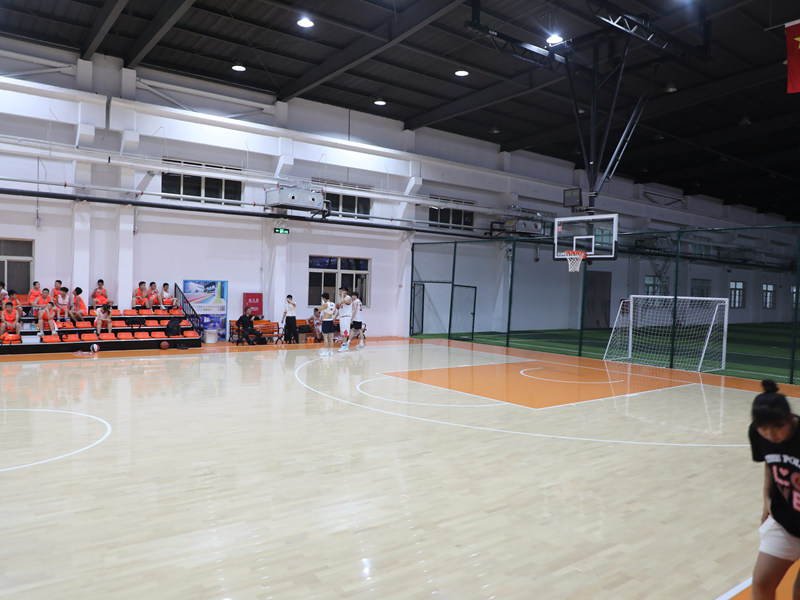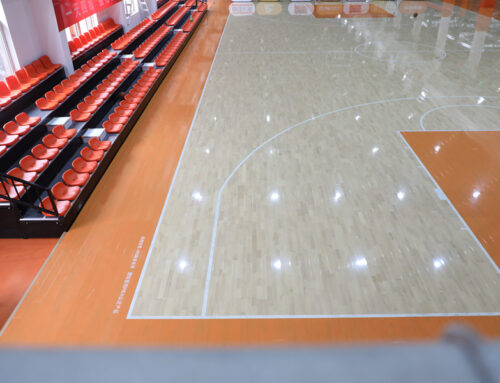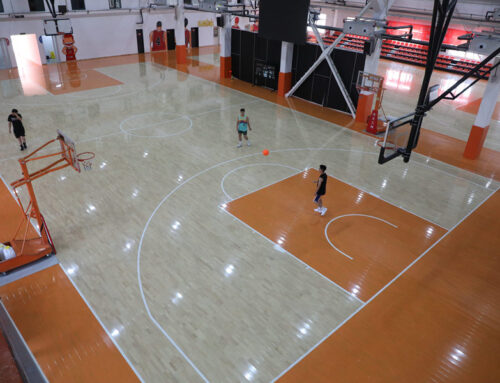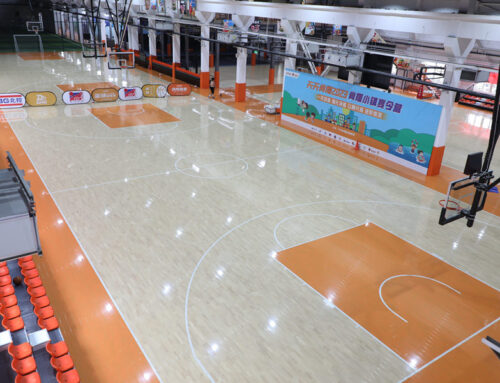So last weekend I finally got around to building that shock-absorbing portable basketball floor I’ve been sketching on napkins for months. It started after seeing my buddy take a nasty fall on his concrete driveway – dude basically ate dirt trying to block a shot. Figured there had to be a safer way.

Getting Stuff Together (The Hunt)
First thing: hunted down materials. Wanted something portable enough to stash in a garage but tough enough for sweaty dudes jumping around. Settled on 1-inch thick soft maple plywood panels after poking around lumber yards. Hard maple was too pricey and heavy – soft maple still felt solid but didn’t break my back. Key thing I learned here: gotta make sure it’s “sanded both sides” unless you enjoy splinters.
Searched for shock pads next. Asked around like a headless chicken. Big gym rubber tiles were expensive and bulky. Foam carpet underlay felt too mushy. Finally stumbled on these thin, dense rubber shock absorber strips meant for under floating floors. Perfect thickness and springiness. Bought a bunch.
Tools already had:
- Circular saw (rusty but works)
- Drill (battery barely holds charge)
- Tape measure (the end is bent, like always)
- Sander (makes more noise than dust lately)
Bought new:
- Pack of metal hinges
- Box of fat wood screws
- Router with a quarter-round bit (borrowed Uncle Ron’s)
Cutting & Making Friends with Dust
Measured out 3×3 foot panels – manageable size to move and store. Dragged the plywood sheet onto sawhorses in the driveway. Took me forever marking straight lines because my chalk line snapped. Ended up using a ruler and pencil like a caveman. Cutting with the circular saw felt sketchy – wood chattered like crazy. Used a straight board clamped down as a guide. Still got some wobbly edges.
Sanded everything – arms were jelly afterwards. This is crucial: rounded off all the edges with the router. Nobody wants shin splinters!
Making It Fold & Absorb Shock
Set two panels on the floor, edge-to-edge. Laid the rubber shock strips like long noodles across the seam where they joined. Made sure they were stuck down good. Then, screwed the hinges onto the top, connecting the two panels right over the rubber strips. The idea: the rubber squishes down when you land, taking the hit, while the hinges let it fold up later.
Repeated the whole hinge-and-rubber dance for the next panels. Ended up with three separate 3×3 foot sections, each pair connected by hinges and hiding rubber shockers underneath. This way, it folds up like a Z.
Testing (AKA Jumping Like a Maniac)
Laid the first panel pair down flat on the patio. Tried bouncing a basketball hard – felt way softer and quieter than the concrete. Then the real test: jumped straight up and landed stiff-legged. Felt a clear cushion. No knee jarring! Did the same jump right on the patio concrete for comparison – definitely felt that shock travel right up my spine.
Problem spotted: when I jumped near the seam over the rubber/hinges, it dipped a tiny bit. Maybe needed wider rubber strips or a second layer?
Finished Thing & What Happened
Worked like a charm! Finished all three sections. Connected them quickly with extra hooks and eyes on the sides. Whole thing clicks together in under a minute, making a decent 9×3 foot play area. Folds up flat for dumping in the corner of the garage (which it does now).
My driveway squad tried it last Sunday. Three sweaty guys dribbling and jumping. Floor stayed solid, no warping. The shock absorption was noticeable – especially during those hard landings after layups. That little dip over the hinges? We got used to it after 5 minutes. Or maybe my knees were just numb. Either way, nobody fell over!
Is it pro-level? Nah. But for slapping together in a dusty weekend? Heck yes. Much kinder on the old knees than concrete, stores easy, and rolls out fast. My garage now hates me for all the sawdust mess, but hey – knees are happy!




